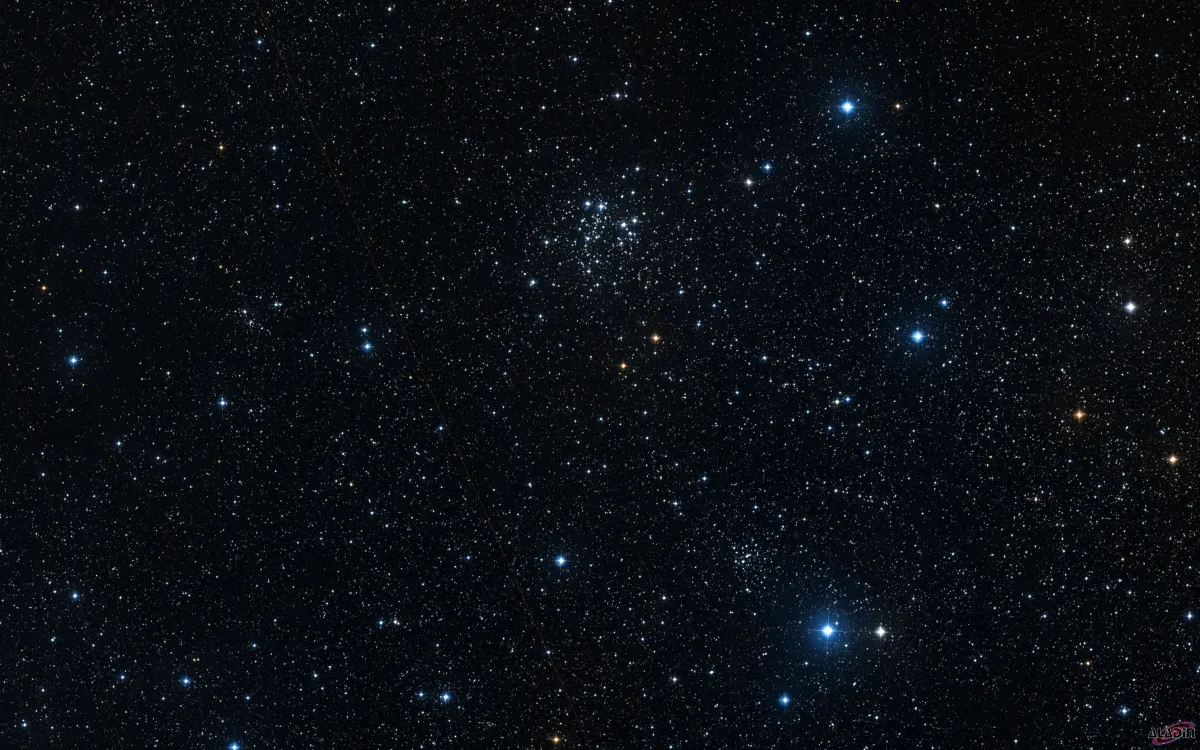Open Clusters NGC 659 & NGC 663

History
According to Caroline Herschels never published «Zone Catalogue» she already discovered both clusters on 3 November 1783. She measured cluster GN 1827 following star δ Cassiopeiae by 17m 47s and 29' north (position of NGC 659). Cluster GN 1828 follows δ Cassiopeiae by 29m 39s and is 1° 2' north of it (position of NGC 663). She was using a small 4.2" f/6.4 Newtonian reflector with 30x magnification built in 1783. [277]
On 3 November 1787 William Herschel listed a «very compressed and rich cluster of stars» as VI 31 and wrote: «A beautiful cluster of pretty large stars near 15' diameter considerably rich.» In the same night he also listed a «coarsely scattered cluster of stars» as VIII 65 and noted: «A small cluster of small stars, not very rich. C. H. 1783» [464] Dreyer added these cluster as NGC 659 and NGC 663 to his «New General Catalogue» published in 1888. [313]
Physical Properties
| Name | RA | Dec | Type | vMag | Dim | MD | Dreyer Description | Identification, Remarks |
|---|---|---|---|---|---|---|---|---|
| NGC 659 | 01 44 24.0 | +60 40 12 | OCL (III1p) | 7.9 | 6 | 1.938 | Cl, lRi, st B | WH VIII 65; GC 389; OCL 332 |
| NGC 663 | 01 46 17.0 | +61 13 06 | OCL (III2m) | 7.1 | 15 | 1.952 | Cl, B, L, eRi, st pL | WH VI 31; GC 392; OCL 333 |
Finder Chart
The clusters NGC 659 and NGC 663 are located in the constellation Cassiopeia. On 22 October they are in opposition to the Sun and crosses the meridian at local midnight. The best viewing time is June to March when the in Europe circumpolar constellation is at its highest.
Visual Observation
300 mm Aperture: NGC 654, NGC 659, NGC 663 und Messier 103 are several small, loose star clusters in an area of about 3°, which tempt you to indulge in some extensive star hopping with the 21 mm Ethos eyepiece (57x, 1.75°). — 300 mm f/4 Popp-Newton, Hasliberg, SQM 20.9, 18. 10. 2025, Bernd Nies
